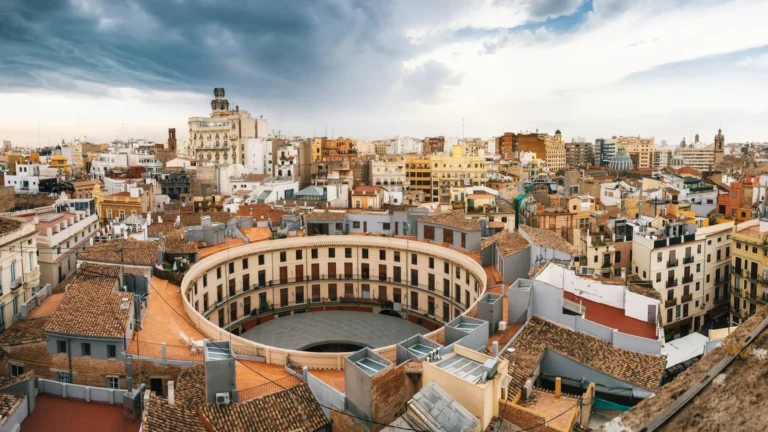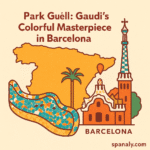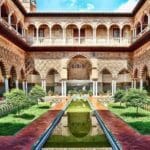Table of Contents
ToggleValencia, Spain’s third-largest city, is a captivating blend of history, culture, innovation, and Mediterranean charm. Nestled on the sun-kissed eastern coast, it has enchanted travelers for centuries with its unique architecture, vibrant festivals, golden beaches, and world-renowned cuisine. From the futuristic marvels of the City of Arts and Sciences to the winding medieval streets of the Old Town, Valencia offers experiences that span ancient heritage, modern creativity, and lively community traditions.
Whether you are a history enthusiast, foodie, festival lover, or beachgoer, Valencia invites you to immerse yourself in a city where past and present coexist in perfect harmony. In this comprehensive guide, we will explore Valencia’s historical roots, top attractions, cultural highlights, culinary treasures, practical travel tips, suggested itineraries, and much more, ensuring your visit is both memorable and effortless
1- A Glimpse into History
Valencia’s history dates back to 138 BC, when it was founded by the Romans as a strategic settlement along the Turia River. Over centuries, it was shaped by a fascinating mix of Roman, Visigoth, Moorish, and Christian influences, leaving an indelible mark on the city’s architecture, traditions, and social fabric.
Roman Foundations: Remnants of city walls, gates, and aqueducts still speak of Valencia’s ancient past.
Medieval Prosperity: The silk trade in the 15th and 16th centuries elevated Valencia to one of Europe’s most important commercial centers, epitomized by La Lonja de la Seda, a UNESCO World Heritage Site.
Religious & Cultural Heritage: Gothic and Baroque cathedrals, chapels, and plazas reflect centuries of religious devotion and artistic achievement.
Valencia’s historical depth is visible not only in buildings but also in its festivals, markets, and culinary traditions, making every corner of the city a living museum
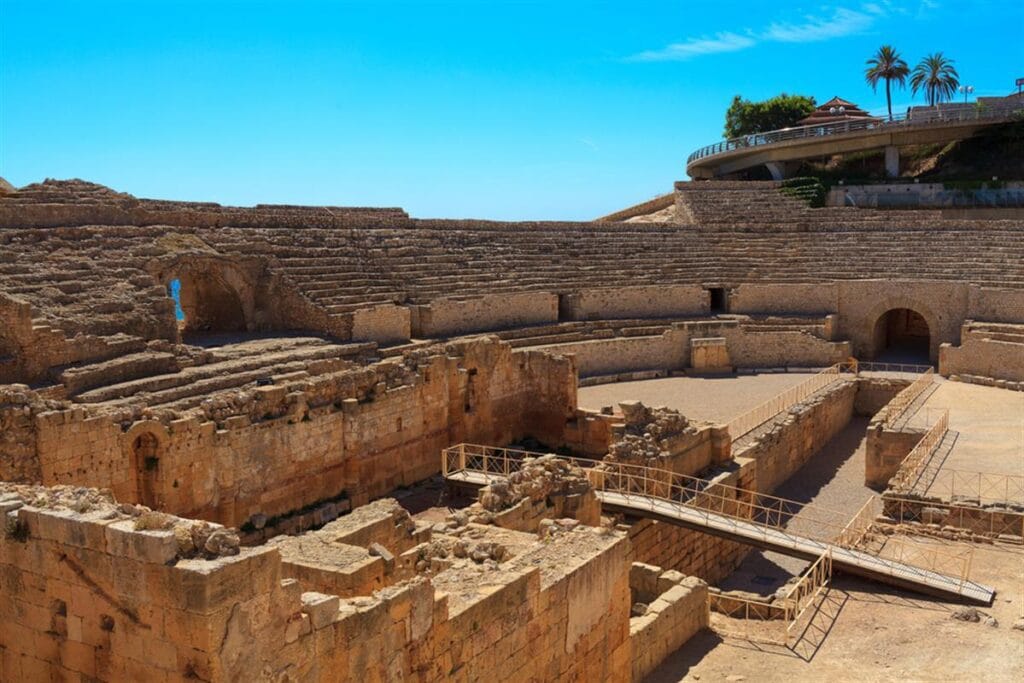
2- Top Attractions in Valencia
City of Arts and Sciences
A symbol of modern Valencia, this futuristic complex features:
Science Museum: Hands-on exhibits ideal for all ages
Oceanogràfic: Europe’s largest aquarium with ecosystems from around the world
Hemisfèric: IMAX cinema and planetarium
Palau de les Arts: Opera and performing arts venue with avant-garde architecture
Valencia Cathedral & Miguelete Tower
Home to the legendary Holy Grail
Architectural fusion of Gothic, Romanesque, and Baroque styles
Climb the Miguelete Tower for panoramic views of the city
La Lonja de la Seda
Former silk exchange showcasing Valencia’s medieval trade power
Beautifully detailed Gothic architecture and symbolic courtyards
Turia Gardens
A former riverbed transformed into a 9-km urban oasis
Perfect for walking, cycling, jogging, or family picnics
Connects major landmarks across the city
Beaches
Malvarrosa Beach: Bustling, family-friendly, and lined with restaurants
El Saler Beach: Tranquil, natural dunes, ideal for relaxation and sunsets
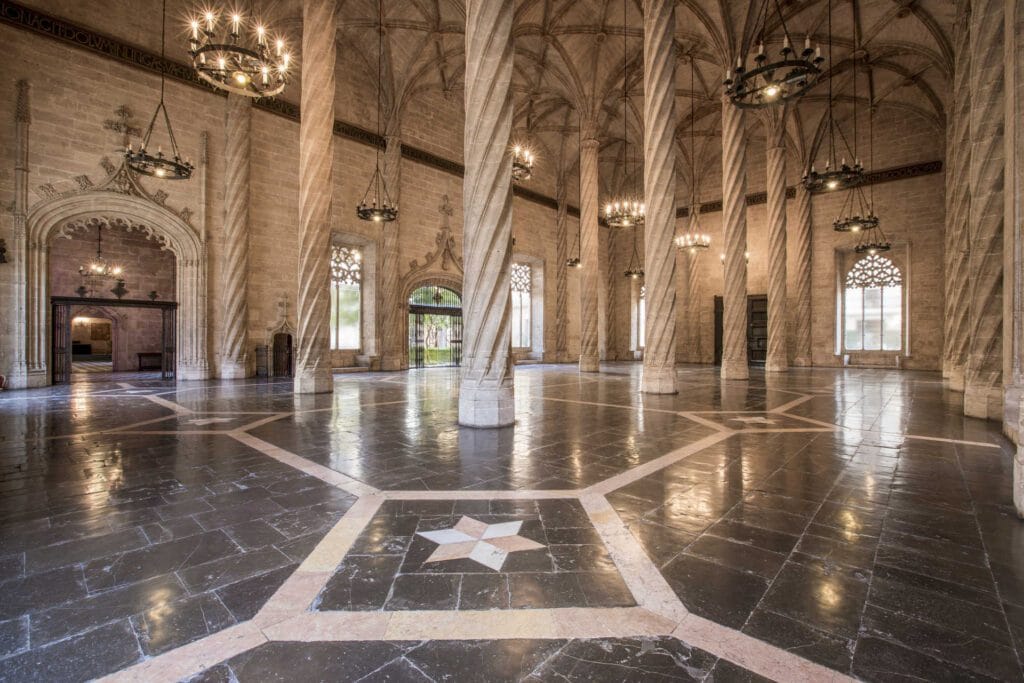
3- Cultural Highlights & Festivals
Valencia is a city pulsating with culture and tradition:
Las Fallas Festival (March)
Giant artistic sculptures are paraded and then spectacularly burned
Accompanied by fireworks, street music, and nightly celebrations
La Tomatina (Buñol, August)
A world-famous tomato-throwing festival
Offers an unforgettable, playful experience near Valencia
Traditional Markets
Central Market: One of Europe’s largest fresh food markets, showcasing local produce, seafood, and artisanal goods
Music, Arts & Local Traditions
Live performances in plazas, contemporary art exhibitions, and folk dances
Opportunity to experience Valencian culture firsthand
4- Food and Drink in Valencia
Valencia is the birthplace of paella, and its culinary scene is as rich as its history:
Traditional Valencian Paella: Rice, rabbit, chicken, and beans
Seafood Paella: Popular along the coast with fresh local seafood
Horchata: Refreshing tiger nut drink, often enjoyed with pastries like fartons
Tapas bars, markets, and seaside restaurants offer a full gastronomic journey
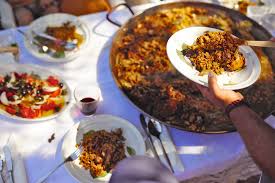
5- Practical Travel Tips
Best Time to Visit: March (Las Fallas) or summer (beaches and festivals)
Transportation: Metro, tram, buses, bike rentals, and walking
Clothing: Lightweight and comfortable; beachwear for summer
Safety: Standard precautions; stay alert in crowded areas during festivals
🔹 Plan the perfect trip with insider tips – read our comprehensive guide.
6- Suggested Itineraries
2-Day Visit:
Day 1: City of Arts and Sciences, Oceanogràfic, Turia Gardens
Day 2: Valencia Cathedral, Central Market, Malvarrosa Beach
3-5 Day Visit:
Explore Albufera Natural Park and rice fields
Attend Las Fallas or La Tomatina if in season
Day trips to Sagunto, Peñíscola, or coastal towns
7- Accommodation Options
Luxury: Rooftop terraces with city or beach views
Mid-Range: Boutique hotels in Eixample or Old Town
Budget: Hostels and guesthouses near major squares
8- Maps & Transportation
Public Transport: Metro, buses, and trams cover most of the city
Cycling: Valencia is very bike-friendly; extensive bike paths
Parking: Limited downtown; better to rely on public transport during festivals
9- Frequently Asked Questions (FAQ)
Q: Is Valencia family-friendly?
A: Absolutely, with beaches, parks, museums, and kid-friendly festival events.
Q: How crowded does Valencia get during festivals?
A: Very busy; plan in advance, especially during Las Fallas and summer.
Q: Can I combine city exploration with nearby natural areas?
A: Yes, Albufera Natural Park is just 10 km from the city and perfect for day trips
Valencia is a city of contrasts and harmony, where ancient history coexists with cutting-edge architecture, bustling markets meet tranquil beaches, and centuries-old traditions are celebrated with vibrant modern flair. Every corner offers stories, flavors, and experiences that captivate the senses—from savoring an authentic paella beside the Mediterranean, to marveling at futuristic buildings, or joining the ecstatic crowds during Las Fallas.
With its rich cultural tapestry, warm Mediterranean spirit, and endless things to see and do, Valencia is more than a destination; it is a journey through time, taste, and tradition. By following this comprehensive guide, visitors can enjoy a fully immersive experience, ensuring they leave with memories that linger long after the sun sets over the Turia River.
Discover maps, itineraries, tips, and hidden gems on Spanaly.com
